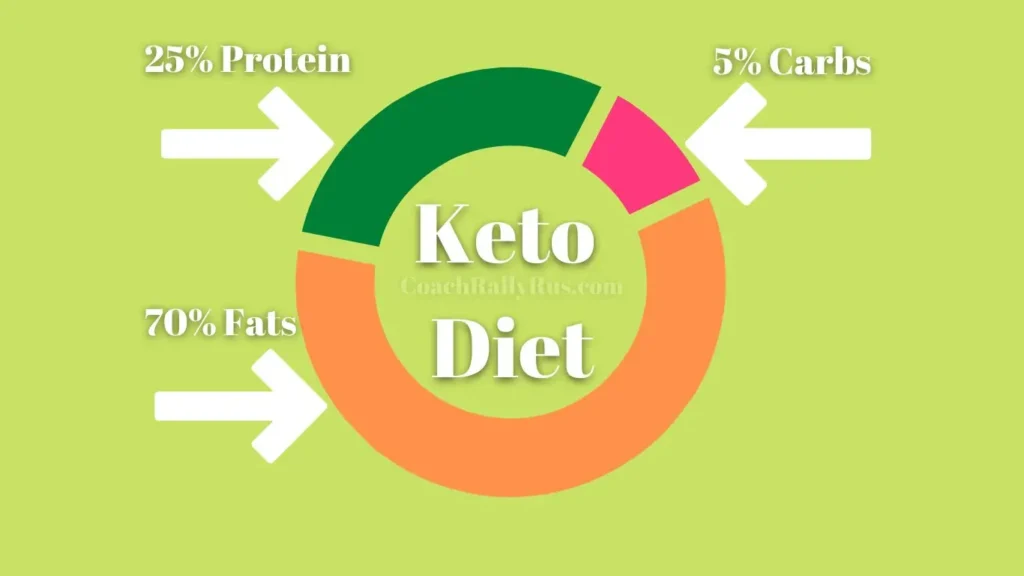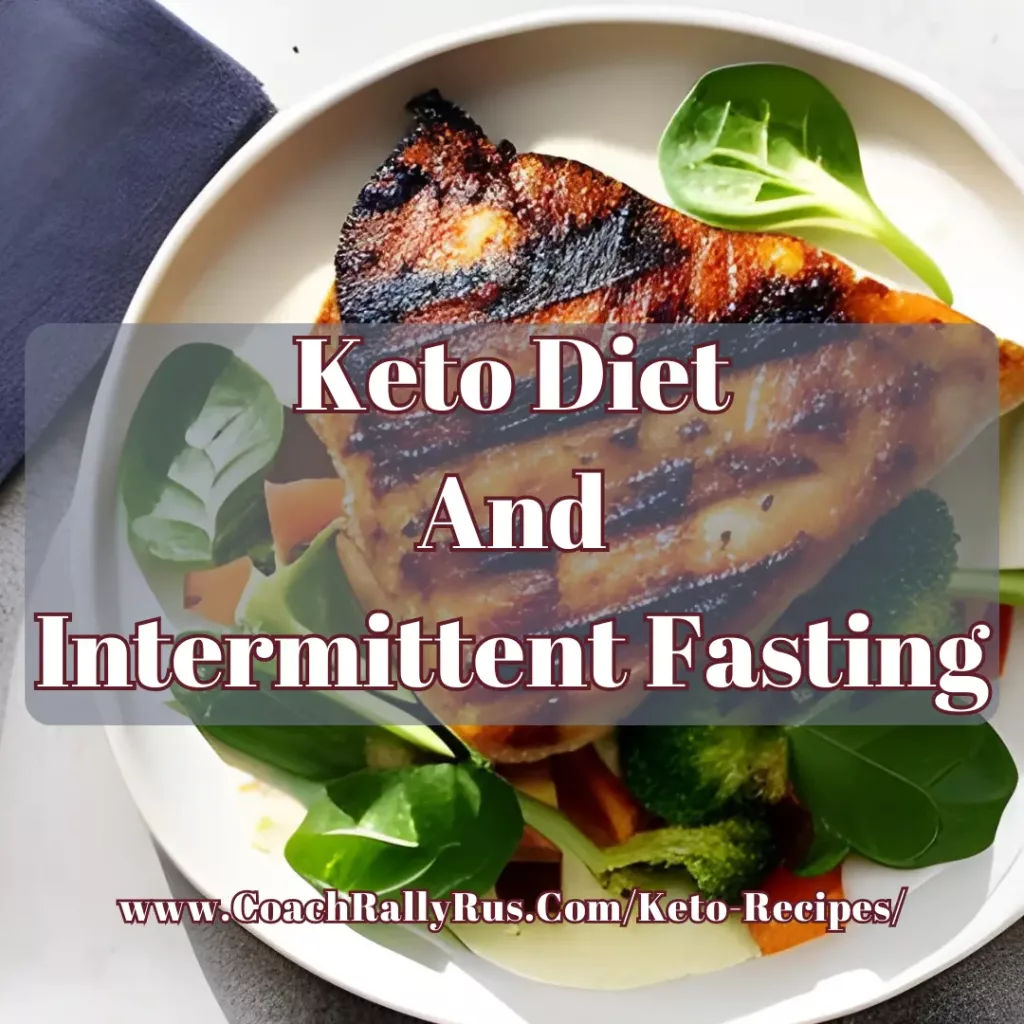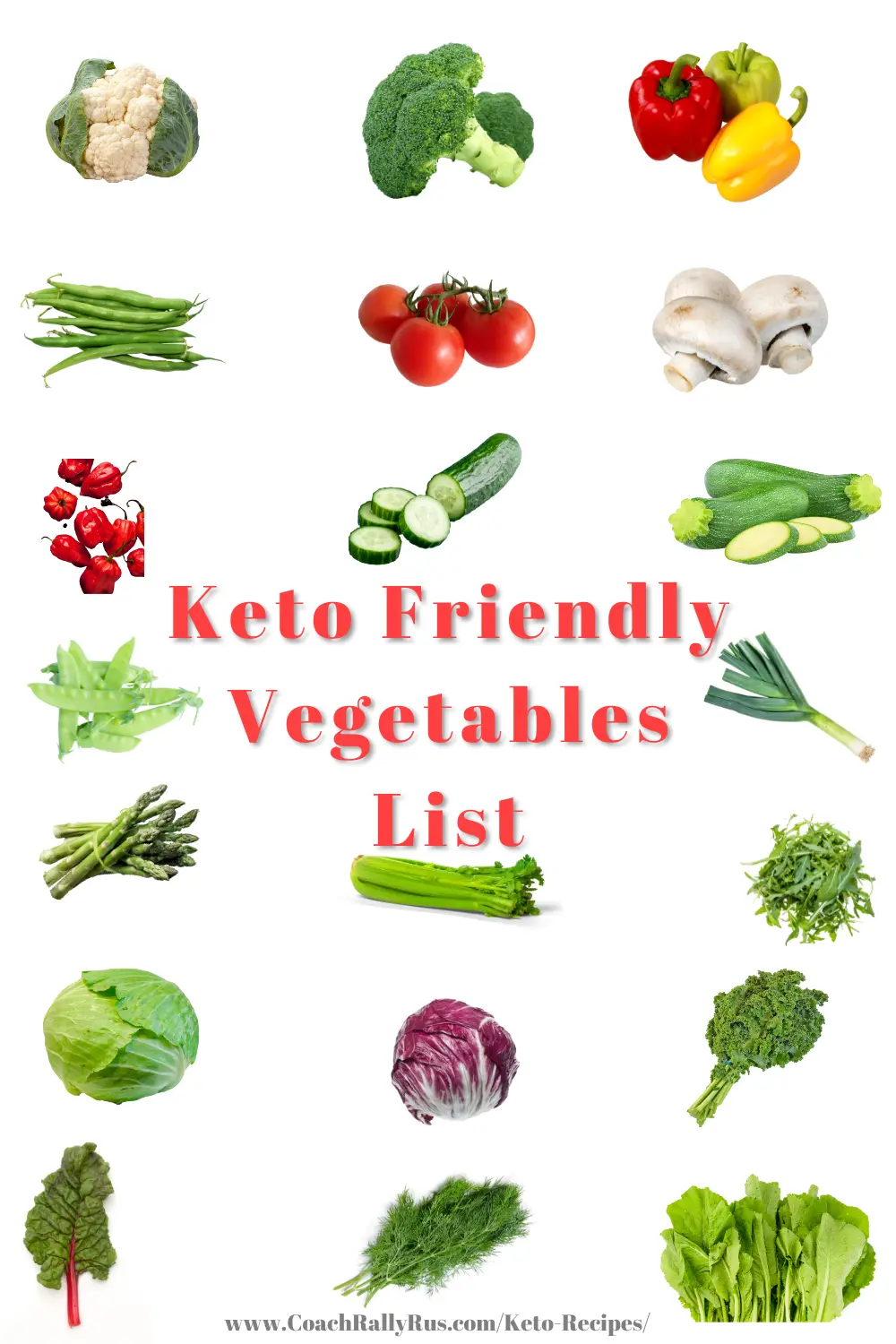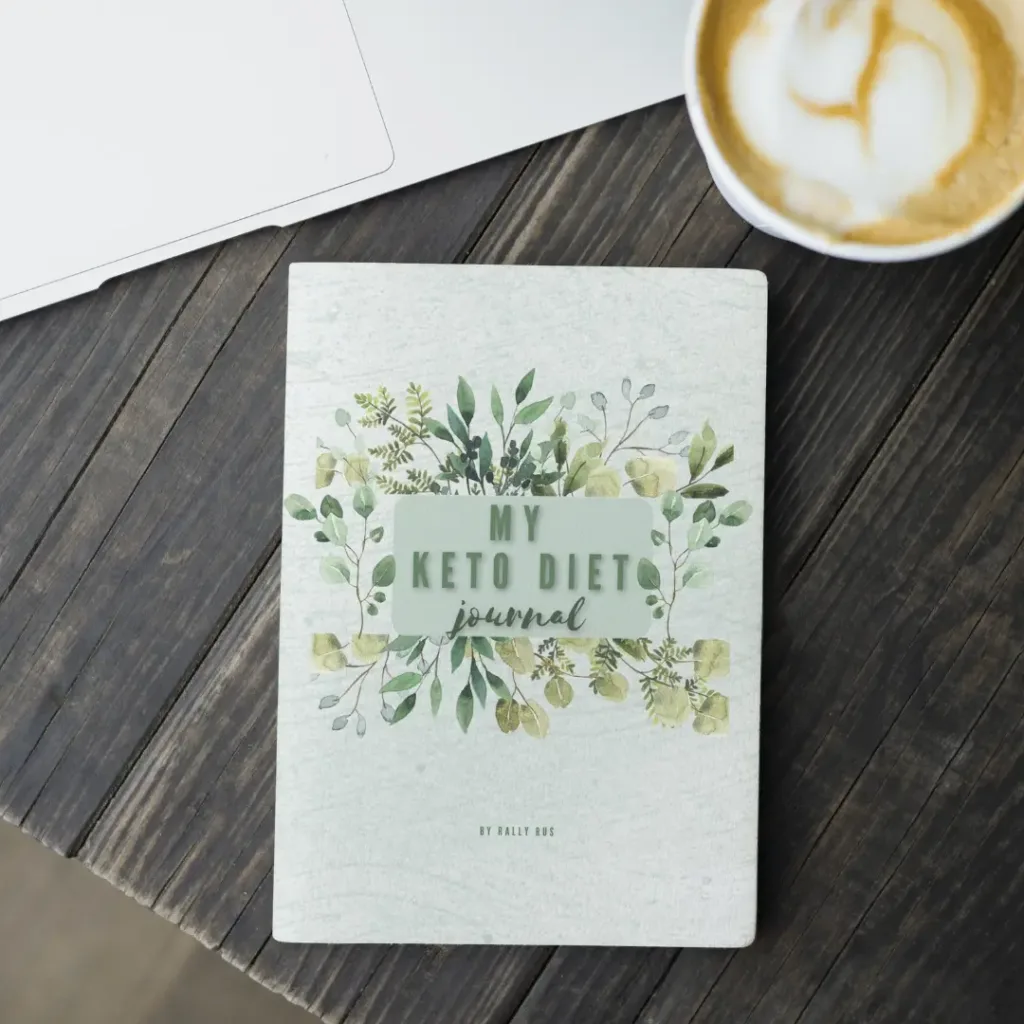Starting a keto diet can be a game-changer for your weight loss and overall health. This guide will help you understand the basics and get started on your keto journey.
What is the Keto Diet?
The keto diet is a low-carb, high-fat diet. It helps your body switch from burning carbs to burning fat. When you eat fewer carbs and more healthy fats, your body enters a state called ketosis. In ketosis, your liver turns fat into ketone bodies. These ketones provide energy for your brain and muscles.
Benefits of the Keto Diet
Keto offers many health benefits. It can help with weight loss, improve blood sugar levels, and increase energy levels. It’s also beneficial for managing heart disease and insulin resistance:
- Weight Loss: Keto helps you lose weight by burning fat.
- Improved Blood Sugar Levels: It can stabilize blood sugar and improve insulin sensitivity.
- Increased Energy Levels: Ketones provide a steady energy source.
- Heart Health: Keto can improve cholesterol levels and reduce high blood pressure.
- Mental Clarity and Focus: Ketones are great for brain function.
- Reduced Inflammation: Keto helps manage inflammation and chronic conditions.
- Appetite Suppression: High-fat foods keep you full longer.
- Potential Cancer Benefits: Some studies suggest keto may slow cancer growth.
- Improved Skin Health: Keto can reduce acne and improve skin.
- Epilepsy Management: Keto can reduce seizures in epilepsy patients.

Types of Keto Diets
Standard Ketogenic Diet (SKD)
This is the most common type of keto diet. It typically consists of 70% fat, 20% protein, and 10% carbs. The SKD is designed to keep you in a state of ketosis consistently, making it ideal for weight loss and overall health improvement.
Cyclical Ketogenic Diet (CKD)
The CKD involves periods of higher carb intake. For example, you might follow a strict keto diet for five days, followed by two days of higher carb intake. This approach can be beneficial for athletes or individuals who need a periodic boost in glycogen stores for intense workouts.
Targeted Ketogenic Diet (TKD)
The TKD allows you to consume carbs around your workouts. This means you can eat carbs shortly before or after exercising to provide your body with the necessary energy for high-intensity activities. It’s a good option for those who find it challenging to maintain energy levels during workouts on a strict keto diet.
Dirty Keto
Dirty Keto focuses on hitting your macro goals (carbs, protein, and fat) without worrying about the quality of the food. This means you can eat any food as long as it fits within your macro limits, even if it’s not traditionally considered keto-friendly. For example, you might include processed foods, fast food, or items with artificial sweeteners. While Dirty Keto can help you stay in ketosis, it may not provide the same health benefits as a clean keto diet, which emphasizes whole, nutrient-dense foods.
High-Protein Ketogenic Diet
This variation is similar to the standard keto diet but includes more protein. The typical ratio is 60% fat, 35% protein, and 5% carbs. This diet is often used by bodybuilders or those who need to maintain muscle mass while losing fat.
Well-Formulated Ketogenic Diet (WFKD)
This term, coined by Dr. Steve Phinney, refers to a keto diet that is carefully balanced to meet the standard keto macronutrient ratios. It emphasizes the importance of getting the right amounts of fat, protein, and carbs to ensure you stay in ketosis and achieve optimal health benefits.
MCT Ketogenic Diet
This diet focuses on using medium-chain triglycerides (MCTs) to provide much of the fat content. MCTs, found in coconut oil and MCT oil, produce more ketones per gram of fat than long-chain triglycerides. This allows for a higher intake of carbs and protein while maintaining ketosis. However, MCTs can cause digestive issues if consumed in large amounts.

Common Questions Answered
Do I Need to Eat a Lot of Fat?
Fat is essential on the keto diet. It provides calories, energy, and flavor in the absence of carbs. However, there’s no need to overdo it.
If you’re on keto for weight loss, some of the fat your body needs will come from your stored body fat. Eating more fat than necessary can lead to weight gain, even with low carb intake.
Add a good serving of fat to each meal to feel full but not overly stuffed. There’s no need to track fat intake unless you’re following keto for therapeutic reasons.
Will Too Much Protein Kick Me Out of Ketosis?
Protein is vital for good health, whether you’re on keto or not. It helps build muscle and supports many bodily functions.
Some believe too much protein can kick you out of ketosis due to gluconeogenesis (GNG), where your body creates glucose from non-carb sources like protein.
Current evidence suggests that the protein content of your diet doesn’t significantly impact GNG. The main issue that prevents ketosis is too many carbs, not too much protein. So, don’t stress about protein intake. Just include a serving of protein, like meat or fish, with every meal.
Do I Need to Track My Macros?
Tracking carbs and protein can be helpful when starting keto. But there’s no need to count fat or calories.
Obsessive tracking can make keto feel burdensome and harder to maintain long-term.
It’s important to track your macros, especially during the first month. This helps you understand how much of each nutrient is in your food. Once you get the hang of it, you can focus on counting just the net carbs.
Start by tracking your carb intake and assess your progress. Over time, you’ll learn what 20g of carbs looks like per day and how much protein you need at each meal without tracking.
Getting Started with Keto Diet
Plan Your Meals: Create a keto diet plan with keto-friendly foods. Include healthy fats like olive oil and fatty acids. Planning your meals helps you stay on track and ensures you get the right balance of nutrients. Consider preparing a weekly menu and shopping list to make your grocery trips easier.
Track Your Carbs: Keep your carb intake low to stay in ketosis. Focus on net carbs. It’s crucial to track your macros, especially during the first month. This helps you understand how much of each nutrient is in your food. Once you get the hang of it, you can focus on counting just the net carbs. Use apps or food diaries to monitor your intake and make adjustments as needed.
Stay Hydrated: Drink plenty of water to avoid keto flu symptoms. Staying hydrated helps your body adjust to the keto diet and can prevent common issues like headaches and fatigue. Aim for at least 8 glasses of water a day, and consider adding electrolytes to your water to maintain balance.
Download My Free Ebook: For more detailed guidance, download my free ebook: The Ultimate Checklist for Starting Keto Diet. This comprehensive guide will help you kickstart your keto journey with ease!
Start Slow: Ease into the diet to avoid flu-like symptoms. Gradually reduce your carb intake over a week or two to help your body adjust. This can make the transition smoother and reduce the severity of the keto flu.
Intermittent Fasting: Combine keto with intermittent fasting for better results. Fasting can help you enter ketosis faster and enhance fat burning. Start with a simple fasting schedule, like 16 hours of fasting followed by an 8-hour eating window. Read more about the Keto Diet And Intermittent Fasting here!

Monitor Your Progress: Track your weight loss and blood glucose levels. Keeping an eye on your progress helps you stay motivated and make necessary adjustments. Use a journal or app to record your daily food intake, weight, and any changes in how you feel.
Join My Support Group: Connect with others who are also following the keto diet by joining my Facebook group. This group provides motivation, tips, and encouragement. Share your experiences, ask questions, and learn from a supportive community of like-minded individuals.
Be Patient: Remember that results take time. Your body needs time to adapt to the new way of eating. Stay consistent and patient, and you’ll start to see the benefits of the keto diet.
What to Eat on Keto
For a full list of keto-friendly foods, download my free ebook The Ultimate Checklist for Starting Keto Diet. But here are the basics:
- Healthy Fats: Avocado, olive oil, and nuts.
- Protein: Meat, fish, and eggs.
- Low-Carb Vegetables: Leafy greens and broccoli.
- Keto Snacks: Cheese, nuts, and keto-friendly ice cream.
Avoid These Foods
- Sugary Foods: Candy, soda, and desserts.
- High-Carb Foods: Bread, pasta, and rice.
- Processed Foods: Avoid dirty keto options.
Tips for Success
Start Slow
Ease into the diet to avoid flu-like symptoms. Gradually reduce your carb intake over a week or two. This helps your body adjust to burning fat for fuel instead of carbs. Sudden changes can lead to the keto flu, which includes symptoms like headaches, fatigue, and irritability. By starting slow, you give your body time to adapt, making the transition smoother and more sustainable.
Intermittent Fasting
Combine with keto for better results. Intermittent fasting involves cycling between periods of eating and fasting. This can help you enter ketosis faster and enhance fat burning. Start with a simple fasting schedule, like 16 hours of fasting followed by an 8-hour eating window. This method can also help control hunger and improve insulin sensitivity.
Monitor Your Progress
Track your weight loss and blood glucose levels. Keeping an eye on your progress helps you stay motivated and make necessary adjustments. Use a journal or app to record your daily food intake, weight, and any changes in how you feel. Regular monitoring can help you identify what works best for your body and make informed decisions about your diet.
Positive Mindset
A positive mindset is extremely important. Believe in yourself and your success. Trust that you can achieve your health goals with determination and consistency. Celebrate your small victories along the way and stay focused on your long-term goals.
Common Mistakes to Avoid
Giving Up Too Early (The Most Common)
Every body needs different time to adjust and heal from the inside out. Give it time. The initial phase of the keto diet can be challenging, and it’s easy to feel discouraged if you don’t see immediate results.
Remember that your body is undergoing significant changes, and it may take a few weeks to fully adapt to the new way of eating. Stay patient and consistent, and trust the process.
Not Eating Enough Fat
Ensure you’re getting enough dietary fat. Fat is a crucial part of the keto diet as it provides the primary energy source. Without enough fat, you may feel hungry and low on energy. Include healthy fats like olive oil, avocados, and nuts in your meals to stay satisfied and maintain energy levels.
Too Much Protein
Balance your protein intake to stay in ketosis. While protein is essential for muscle maintenance and overall health, too much can kick you out of ketosis. This happens because excess protein can be converted into glucose through a process called gluconeogenesis. Aim for a moderate protein intake, typically around 1.2 to 2.0 grams per kg of body weight.
Ignoring Electrolytes
Maintain your insulin levels and energy levels by keeping your electrolytes balanced. When you start keto, your body excretes more sodium, potassium, and magnesium, which can lead to imbalances. This can cause symptoms like muscle cramps, fatigue, and headaches. To avoid this, add electrolyte-rich foods to your diet, such as leafy greens, nuts, and seeds, or consider taking supplements.
Do I Need to Take Supplements on a Keto Diet?
While following a keto diet, certain supplements can help optimize your nutrition and reduce adverse effects.
Check out my top picks in my Amazon Store here!
Here are some of the most common and beneficial supplements for keto dieters:
Electrolytes
When you start a keto diet, your body excretes more sodium, potassium, and magnesium. This can lead to imbalances and symptoms like muscle cramps, fatigue, and headaches. To avoid this, consider taking electrolyte supplements or adding electrolyte-rich foods to your diet, such as leafy greens, nuts, and seeds.
Magnesium
Magnesium is crucial for energy production, muscle function, and regulating blood sugar levels. Many people on a keto diet may not get enough magnesium from food alone. Supplementing with 200–400 mg of magnesium per day can help reduce muscle cramps, improve sleep, and prevent irritability.
MCT Oil
Medium-chain triglycerides (MCTs) are a type of fat that is quickly absorbed and converted into ketones by the liver. MCT oil can help increase your fat intake, boost ketone levels, and provide a quick energy source. It can also promote weight loss and increase feelings of fullness.
Omega-3 Fatty Acids
Omega-3s, found in fish oil supplements, can help reduce inflammation, improve heart health, and support brain function. They can also help balance the omega-6 fatty acids that are often higher in a keto diet.
Vitamin D
Many people are deficient in vitamin D, which is essential for bone health, immune function, and mood regulation. Supplementing with vitamin D can help maintain optimal levels, especially if you have limited sun exposure.
Digestive Enzymes
Some people may experience digestive issues when transitioning to a high-fat diet. Digestive enzyme supplements can help your body break down and absorb fats more efficiently, reducing symptoms like bloating and indigestion.
Fiber Supplements
Since the keto diet can be low in fiber due to the restriction of high-carb fruits and vegetables, a fiber supplement can help maintain digestive health and regularity. Look for fiber supplements that are low in net carbs.
While supplements can be beneficial, it’s important to focus on getting most of your nutrients from whole, nutrient-dense foods. Always consult with a healthcare professional before starting any new supplement regimen to ensure it’s appropriate for your individual needs.
Exogenous Ketones
These supplements provide an external source of ketones, which can help increase your ketone levels and provide a quick energy boost. They can be particularly useful during the initial stages of the keto diet or when you need an extra energy boost.
Read more about Exogenous Ketones Supplements
Long-Term Success
Keto can be a sustainable healthy lifestyle. Focus on low-carb diet principles and enjoy the health benefits. Remember, it’s a good idea to consult with a healthcare provider before starting any new dietary changes.













Thank you very much for sharing, I learned a lot from your article. Very cool. Thanks.
Pingback: WHAT TO EXPECT DURING THE FIRST 2 WEEKS FOLLOWING KETO? ALL YOU NEED TO KNOW